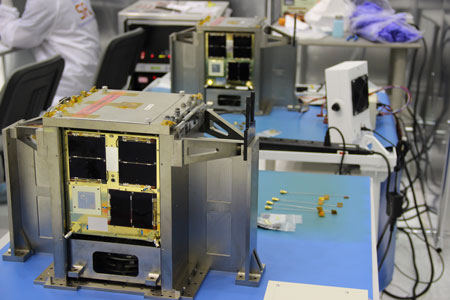 Costing a fraction of conventional space telescopes and similar in size and weight to a car battery, the satellites are two of six that will work together to shed light on the structures and life stories of some of the brightest stars in the sky, uncovering unique clues as to the origins of our own Sun and Earth.
Costing a fraction of conventional space telescopes and similar in size and weight to a car battery, the satellites are two of six that will work together to shed light on the structures and life stories of some of the brightest stars in the sky, uncovering unique clues as to the origins of our own Sun and Earth.
Jun 19th, 2014
Read more
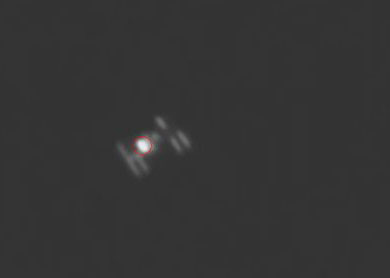 On June 5th, 2014, the ISS passed over the Table Mountain Observatory in Wrightwood, California, and beamed an HD video to researchers waiting below. Unlike normal data transmissions, which are encoded in radio waves, this one came to Earth on a beam of light.
On June 5th, 2014, the ISS passed over the Table Mountain Observatory in Wrightwood, California, and beamed an HD video to researchers waiting below. Unlike normal data transmissions, which are encoded in radio waves, this one came to Earth on a beam of light.
Jun 18th, 2014
Read more
 Theory says there may be disk of it at center of galaxy.
Theory says there may be disk of it at center of galaxy.
Jun 18th, 2014
Read more
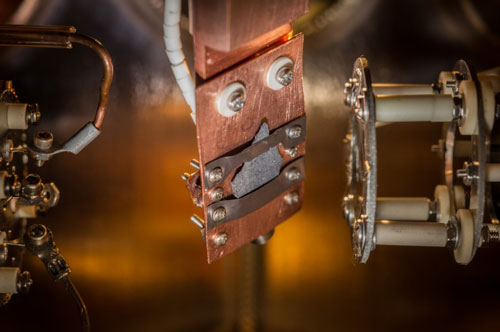 New research indicates that ultraviolet photons emitted by the sun likely cause H2O molecules on the lunar surface to either quickly desorb or break apart. The fragments of water may remain on the lunar surface, but the presence of useful amounts of water on the sunward side is not likely.
New research indicates that ultraviolet photons emitted by the sun likely cause H2O molecules on the lunar surface to either quickly desorb or break apart. The fragments of water may remain on the lunar surface, but the presence of useful amounts of water on the sunward side is not likely.
Jun 17th, 2014
Read more
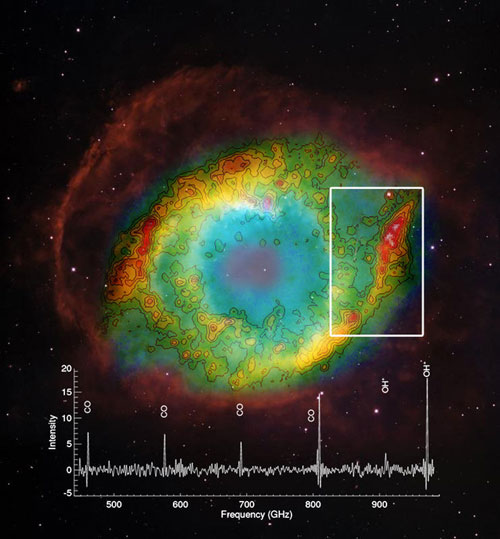 Using ESA's Herschel space observatory, astronomers have discovered that a molecule vital for creating water exists in the burning embers of dying Sun-like stars.
Using ESA's Herschel space observatory, astronomers have discovered that a molecule vital for creating water exists in the burning embers of dying Sun-like stars.
Jun 17th, 2014
Read more
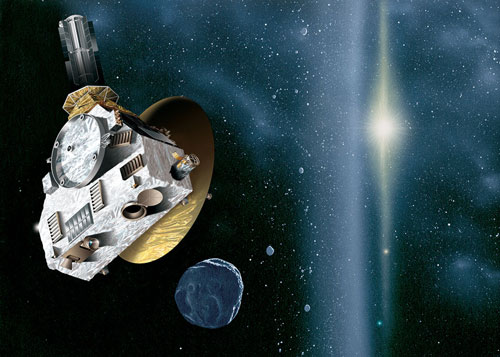 The Hubble Space Telescope Time Allocation Committee has recommended using Hubble to search for an object the Pluto-bound NASA New Horizons mission could visit after its flyby of Pluto in July 2015.
The Hubble Space Telescope Time Allocation Committee has recommended using Hubble to search for an object the Pluto-bound NASA New Horizons mission could visit after its flyby of Pluto in July 2015.
Jun 16th, 2014
Read more
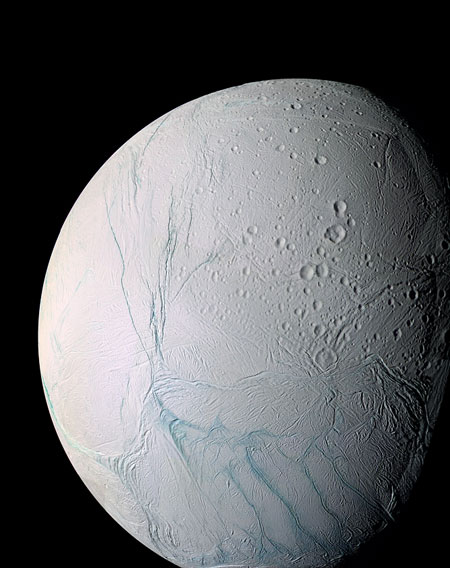 If the icy surface of Pluto's giant moon Charon is cracked, analysis of the fractures could reveal if its interior was warm, perhaps warm enough to have maintained a subterranean ocean of liquid water, according to a new study.
If the icy surface of Pluto's giant moon Charon is cracked, analysis of the fractures could reveal if its interior was warm, perhaps warm enough to have maintained a subterranean ocean of liquid water, according to a new study.
Jun 13th, 2014
Read more
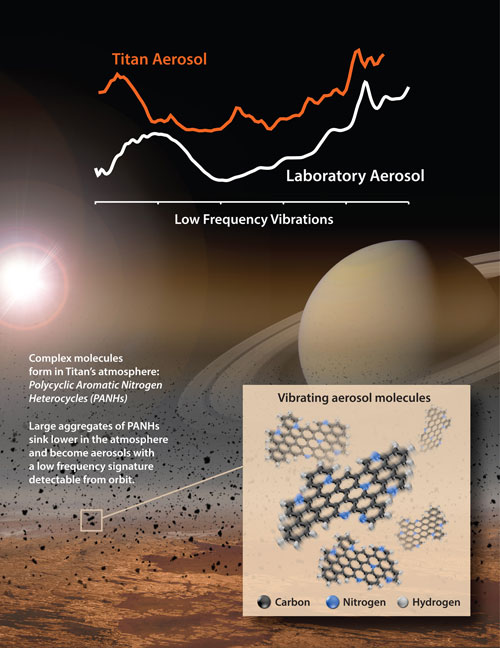 NASA scientists have created a new recipe that captures key flavors of the brownish-orange atmosphere around Saturn's largest moon, Titan.
NASA scientists have created a new recipe that captures key flavors of the brownish-orange atmosphere around Saturn's largest moon, Titan.
Jun 13th, 2014
Read more
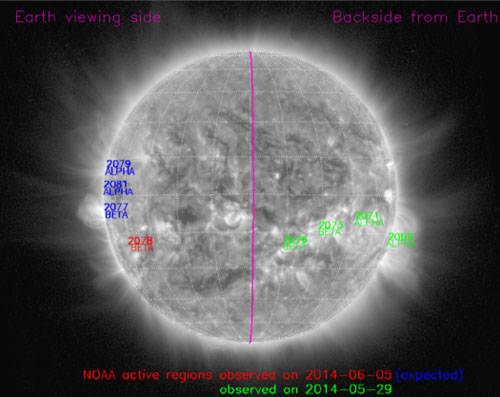 For the first time, ESA is providing regular space-weather reports for a spacecraft orbiting another planet.
For the first time, ESA is providing regular space-weather reports for a spacecraft orbiting another planet.
Jun 13th, 2014
Read more
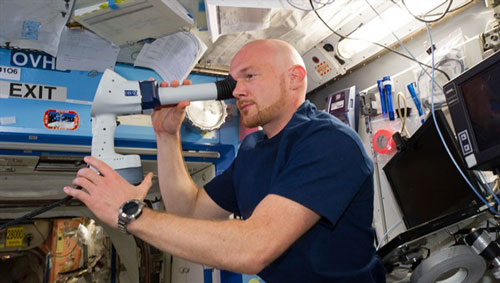 Alexander Gerst has been living and working in microgravity since 29 May 2014, and the focus of his initial research on the International Space Station (ISS) is currently himself.
Alexander Gerst has been living and working in microgravity since 29 May 2014, and the focus of his initial research on the International Space Station (ISS) is currently himself.
Jun 12th, 2014
Read more
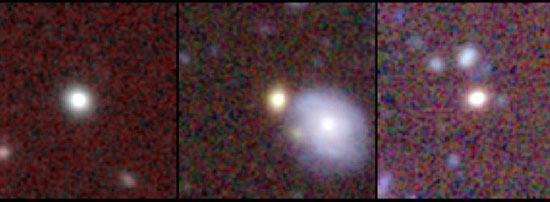 The world of astronomy has changed. An astronomer used to have to travel to a remote location and endure long, cold nights, patiently guiding a telescope to collect precious photons of light. Now, a proliferation of online archives allows astronomers to make discoveries from the comfort of their own offices. By mining such archives, a team of astronomers has found a treasure trove of 'red nugget' galaxies.
The world of astronomy has changed. An astronomer used to have to travel to a remote location and endure long, cold nights, patiently guiding a telescope to collect precious photons of light. Now, a proliferation of online archives allows astronomers to make discoveries from the comfort of their own offices. By mining such archives, a team of astronomers has found a treasure trove of 'red nugget' galaxies.
Jun 11th, 2014
Read more
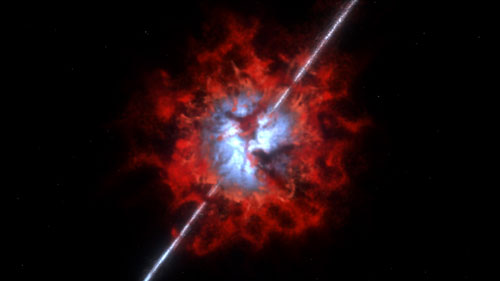 Using the Atacama Large Millimeter/submillimeter Array (ALMA), a team of researchers reports the first-ever detection of molecular gas in two galaxies that were previously rocked by gamma ray bursts (GRBs), the brightest explosions in the Universe. These new observations revealed that the molecular gas was concentrated toward the centers of the galaxies, while the GRBs occurred in unusual environments that were surprisingly bereft of gas yet rich in dust.
Using the Atacama Large Millimeter/submillimeter Array (ALMA), a team of researchers reports the first-ever detection of molecular gas in two galaxies that were previously rocked by gamma ray bursts (GRBs), the brightest explosions in the Universe. These new observations revealed that the molecular gas was concentrated toward the centers of the galaxies, while the GRBs occurred in unusual environments that were surprisingly bereft of gas yet rich in dust.
Jun 11th, 2014
Read more
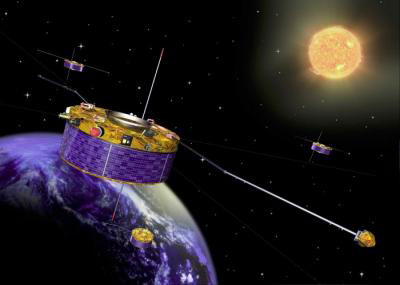 Space is not empty. A wind of charged particles blows outwards from the Sun, carrying a magnetic field with it. Sometimes this solar wind can break through the Earth's magnetic field. Researchers now have an answer to one of the questions about how this actually occurs.
Space is not empty. A wind of charged particles blows outwards from the Sun, carrying a magnetic field with it. Sometimes this solar wind can break through the Earth's magnetic field. Researchers now have an answer to one of the questions about how this actually occurs.
Jun 11th, 2014
Read more
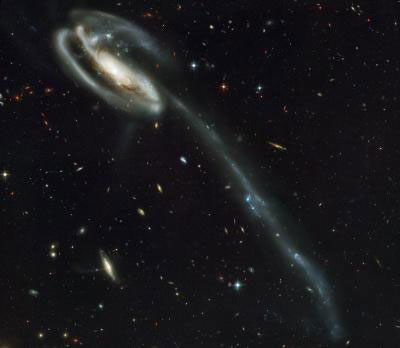 Dwarf galaxies that orbit the Milky Way and the Andromeda galaxies defy the accepted model of galaxy formation, and recent attempts to wedge them into the model are flawed, reports an international team of astrophysicists. A new study pokes holes in the current understanding of galaxy formation and questions the accepted model of the origin and evolution of the universe.
Dwarf galaxies that orbit the Milky Way and the Andromeda galaxies defy the accepted model of galaxy formation, and recent attempts to wedge them into the model are flawed, reports an international team of astrophysicists. A new study pokes holes in the current understanding of galaxy formation and questions the accepted model of the origin and evolution of the universe.
Jun 11th, 2014
Read more
After 18 months of research and deliberation, the Committee on Human Spaceflight - a diverse national group of scientists and professionals convened by Congressional request - issued a 285-page report June 4 on whether Earth-bound humans should continue exploring space.
Jun 10th, 2014
Read more
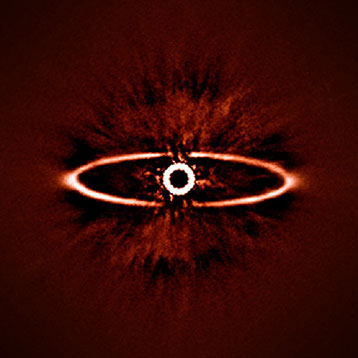 The European SPHERE instrument has been successfully installed on ESO's Very Large Telescope (VLT) and has achieved first light. This powerful new facility can directly image gas-giant exoplanets and dust discs orbiting nearby stars (up to 300 light years away) with unparalleled precision and contrast.
The European SPHERE instrument has been successfully installed on ESO's Very Large Telescope (VLT) and has achieved first light. This powerful new facility can directly image gas-giant exoplanets and dust discs orbiting nearby stars (up to 300 light years away) with unparalleled precision and contrast.
Jun 10th, 2014
Read more
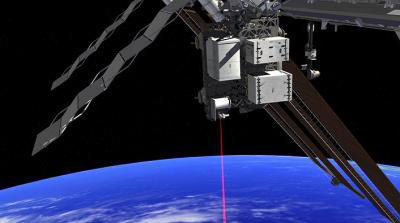 The high-definition video via laser transmission from space to ground, stating 'Hello, World!' was the first of its kind for the Optical Payload for Lasercomm Science from the International Space Station.
The high-definition video via laser transmission from space to ground, stating 'Hello, World!' was the first of its kind for the Optical Payload for Lasercomm Science from the International Space Station.
Jun 9th, 2014
Read more
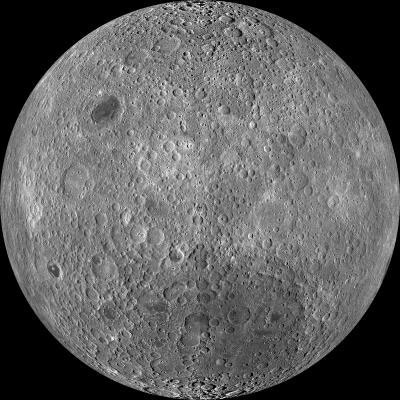 The Man in the Moon appeared when meteoroids struck the Earth-facing side of the moon creating large flat seas of basalt that we see as dark areas called maria. But no 'face' exists on farside of the moon and now, Penn State astrophysicists think they know why.
The Man in the Moon appeared when meteoroids struck the Earth-facing side of the moon creating large flat seas of basalt that we see as dark areas called maria. But no 'face' exists on farside of the moon and now, Penn State astrophysicists think they know why.
Jun 9th, 2014
Read more
 Costing a fraction of conventional space telescopes and similar in size and weight to a car battery, the satellites are two of six that will work together to shed light on the structures and life stories of some of the brightest stars in the sky, uncovering unique clues as to the origins of our own Sun and Earth.
Costing a fraction of conventional space telescopes and similar in size and weight to a car battery, the satellites are two of six that will work together to shed light on the structures and life stories of some of the brightest stars in the sky, uncovering unique clues as to the origins of our own Sun and Earth.
 Subscribe to our Space Exploration News feed
Subscribe to our Space Exploration News feed














